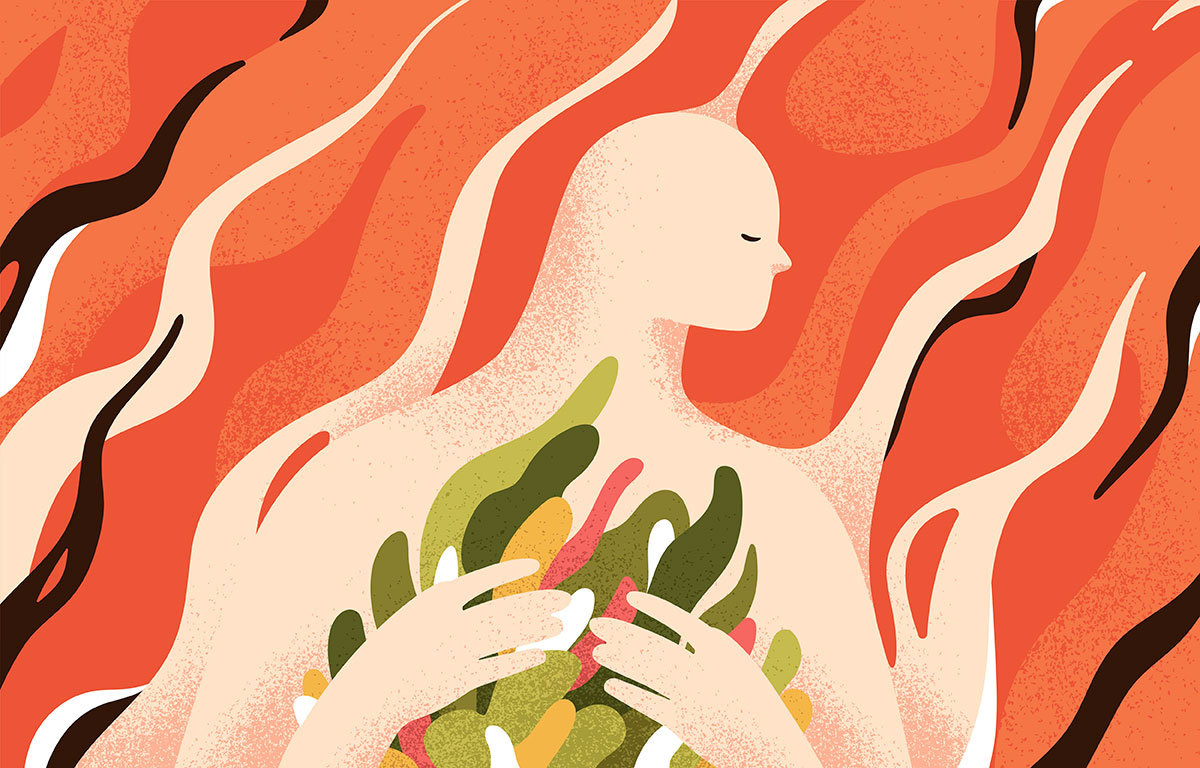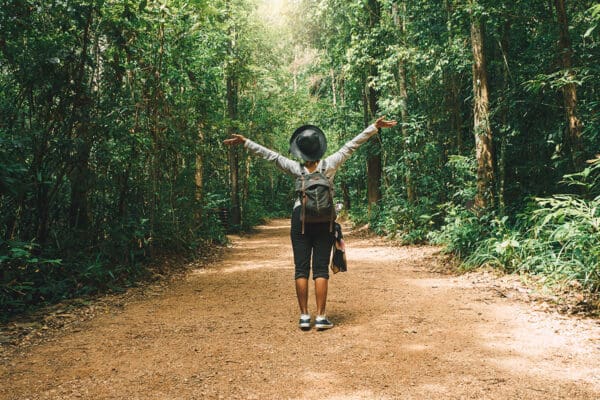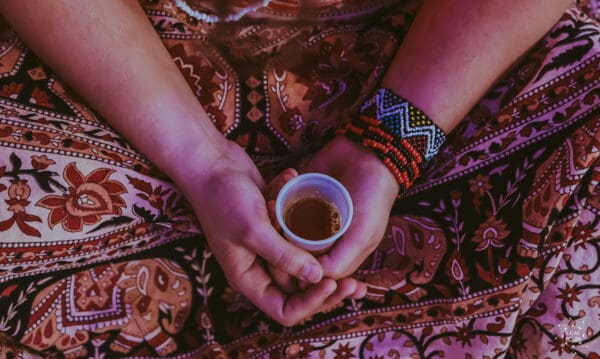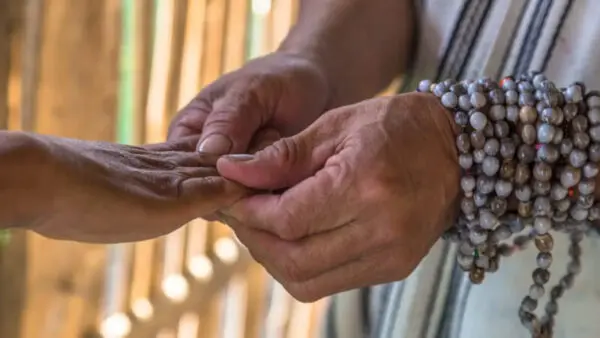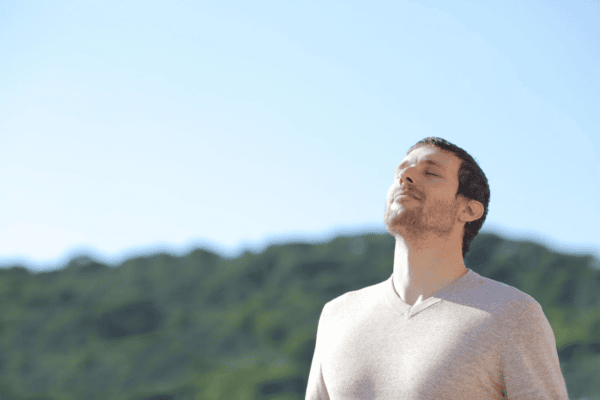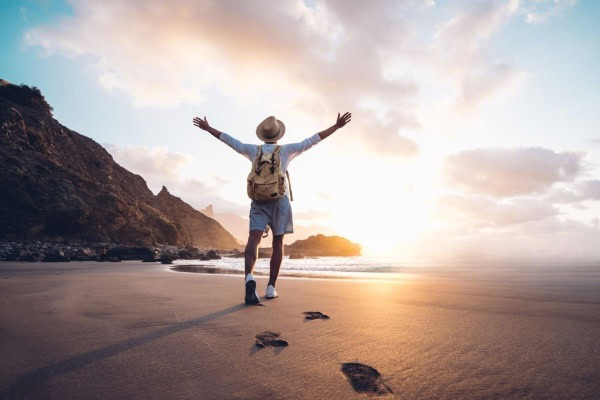Some say that the moment you decide that you’re going to drink ayahuasca, the ceremony begins. Preparing for your ayahuasca experience, fostering a sense of commitment, and becoming appropriately educated will set you up for success when the ceremony finally arrives, as well as in the period afterward when you begin to integrate your journey.
What can you do to ensure that you have the best experience possible?
5 Ways to Have an Amazing Ayahuasca Experience
Cleanse.
People commonly adhere to a specific diet, called a dieta, in preparation for ayahuasca work. Some dietary guidelines are for your physical safety, as ayahuasca can have unpleasant, even dangerous interactions with certain foods. Be sure to adhere to all of the recommended safety guidelines.
Physically, you should avoid consuming caffeine, alcohol, recreational substances, cacao, spicy foods, dairy products, red meat, and refined sugar for at least a week leading up to the ceremony. Many facilitators advise two weeks without pork before and after ayahuasca. Tyramine, an amino acid present in many foods, does not combine well with ayahuasca, so avoid aged cheese, yogurt, fermented foods, yeast, some legumes, and highly ripened fruits and vegetables for a few days before and after your journey.
In general, stick to a simple, natural, organic diet.
Cleansing is something that you can do on every level, not just physically. To psychologically and spiritually cleanse, consider taking some time off before the ceremony to be alone, focus on self-care, journal, set intentions, and settle into your space. You may also want to limit social and news media in preparation for the experience.
Set Intention.
Intentions may have a powerful impact on where our attention goes, what choices we make and what outcomes follow. So, what constitutes a good intention?
An intention can be like a lifeline as you ride the waves of your experience. You can return to that original purpose when things get rough and remember the deeper reason(s) why you are doing this.
Shakespeare once said that expectation is the root of all heartache. The psychedelic experience is likely to unfold in a totally different way than you might predict, so it’s important when you make intentions to leave them open-ended enough that they can come through in their own way and in their own time. It’s a good idea to avoid intentions that carry with them the baggage of expectations about how it needs to look for this intention to “come true.”
Intentions can unfold in unexpected ways, and sometimes we have to do other work before those intentions can be fully addressed or actualized, so try to stay humble in receiving the messages you are given. This requires that your intentions are at a balance where they provide some guidance and structure, but they don’t have to steer the whole trip.
Read this article for more on crafting intentions.
Practice presence.
Humans have bodies that have evolved masterfully to help us stay alive and reproduce. Part of that patterning is the drive to both seek out pleasure or comfort and to avoid discomfort. In Buddhism, this is called craving/attachment and aversion, respectively.
Ayahuasca work challenges this wiring by bringing up what can feel like some of our most difficult emotional and physical sensations, even spiritual experiences. Even though it doesn’t feel good, try to notice what is arising and stay present with it as long as you can. Leaning into the discomfort can help the medicine do its work.
You may witness yourself struggling to cope with the feelings or doing things to try to make them go away. There is no right answer as to what exactly you should do during your journey when you come to face difficult things. Sometimes people have big breakthroughs in the ceremony when they reach out for help rather than suffer in silence. Sometimes the breakthrough comes when a person surrenders to the feelings and allows them to run their course without trying to change them. Try to trust your gut about what to do when faced with your demons. It can also be useful to ask the medicine.
Remember that what is coming up is something that has probably been there for a very long time. Even relatively recent traumatic experiences often have some root in the past, sometimes in unexpected ways. The reason you are encountering this difficult feeling now may be because it was hidden under layers of distraction, dissociation, numbing, maladaptive coping, culturally imposed values (such as stoicism) or any other mechanism that allows us to move through daily life even though we are hurting or have significant trauma in our past.
You can thank your coping mechanisms for providing you with relief and distance from the pain so that you could survive and function. Indeed, without our coping and defense mechanisms, some of us may not have survived to see this day. Going into an ayahuasca ceremony, you must be prepared to face some things that have been numbed or hidden for potentially a long time. From a psychosomatic perspective, ayahuasca brings these feelings up so that they can be fully processed, expressed, and healed, rather than remaining buried in the shadow. And as Carl Jung said, “Hold your shadow in front of you. It can only take you down from behind”.
Similar to training for an athletic event, studying for a test, and other tasks that require dedication and the endurance of some discomfort, going through something that doesn’t feel great at the time can pay off in the end. The more you can practice sitting with “what is” and remember that this feeling will pass, as all things do, the more you will build your capacity to traverse difficult terrain inside (and outside) of your ayahuasca journey.
Nurture your mind-body connection through mindful movement, meditation, and other somatic work prior to and following the ceremony. Bodily sensations and emotions are deeply connected in ways that science is only beginning to understand. In your ayahuasca ceremony, you may experience a range of emotions and physical sensations, so the more practice you have at recognizing those states and the patterns that can arise, the better prepared you will be for your ayahuasca journey.
Let go.
One of the many benefits of altered states of consciousness is the opportunity to practice surrender. Of course, it helps to know that it will actually be OK to let go. What do you need in order to feel safe enough to do so?
Vetting your ayahuasca facilitator(s) and retreat center, and checking to make sure that you feel aligned with their protocols is important. You should feel comfortable to talk to the facilitator and/or helpers if you need anything. This community guide offers perspectives about ayahuasca and sexual assault which may be useful to consider.
In the ceremony, you may encounter physical sensations such as nausea which are hard to surrender into. People don’t typically associate nausea or vomiting with having a “good” time, but in the case of ayahuasca, purging is looked at as an important, even necessary part of the process. Some circles call it “getting well” to purge in this way.
The tea’s physical, emotional, psychological, and spiritual effects can bring on states of nausea. There is no singular reason for this, so try not to agonize about why it’s happening for you, or when it will stop. Perhaps the nausea is purely physical and is an understandable reaction to drinking what can be a quite noxious brew. Perhaps it is more emotional, and the body is feeling nauseous in response to the stress and the psychological content that the experience is bringing up. Perhaps there is a spiritual process occurring , and the body’s response to it is to become queasy and maybe even purge in some way.
No matter what is happening, it is more important to stay present, judging the experience as little as possible. For some people, intellectualizing, analyzing or “trying to figure out” situations can be a tactic to avoid pain, confusion or discomfort. Having a sense that you know what’s going on could bring some relief, however short lived it may be, to a scary and confusing experience. The mind may offer some escape, as we can become distracted by thinking about “what is happening.”
Try to notice the nausea without reacting to it. Notice what stories, thoughts, emotions, and sensations arise while you feel the nausea. While it might be hard, try to trust that this is happening for a reason.
Sometimes nausea comes up as a precursor to a purge. Vomiting, experiencing diarrhea, passing gas, sneezing, yawning, sweating, crying, burping, shaking, laughing and/or other vocalizing are all ways to purge . Whatever is coming up for you, try to allow it to do what it needs to do. All ayahuasca traditions regard purging as a healthy and normal part of the journey. Purging is often a release of stuck energy. Once the energy moves, there may be a lot more spaciousness than there was before. The goal is to let go of what no longer serves you.
Receive, and give.
You have done so much work to arrive at this point. In fact, all of your ancestors have done so much work so that you can arrive at this point. The opportunity to drink ayahuasca is a huge privilege and gift, and you deserve all of the healing that comes your way. Remember to try to open your heart and mind and let it in.
Sacred reciprocity or proper relationship are both translations of the Quechua word ayni, regarded by many indigenous cultures as a fundamental law of life.
Ayahuasca may offer you gifts and healing that you appreciate immediately. This is not always the case though; some of the lessons can be incredibly hard. For some people, ayahuasca is not for them, and they instead choose to connect with themselves and heal through other means. It is all OK.
Regardless, consider a way that you can keep the energy moving by giving back. Ayahuasca comes from the Amazon, so you may consider finding a cause to donate toward, or volunteering your time in your local community.
Integration is another way of giving back. When we take care of ourselves and work on our own issues, it is a gift not only to ourselves but to our friends, family, and community. After an ayahuasca experience, keep the magic alive by integrating the journey into your life.
